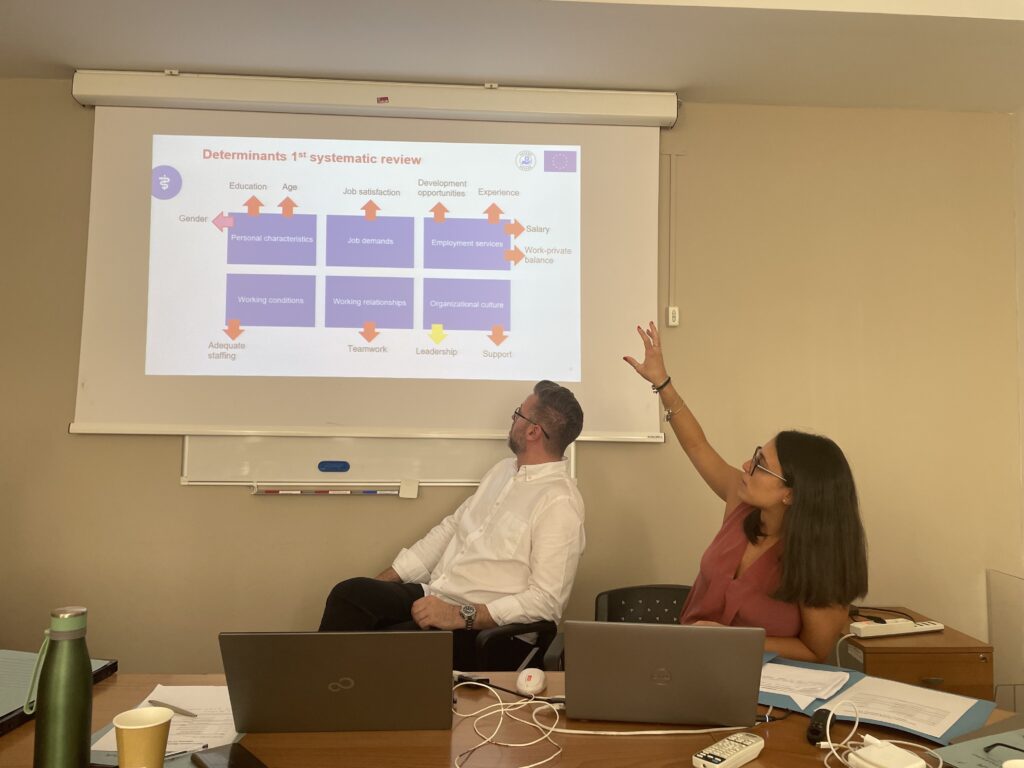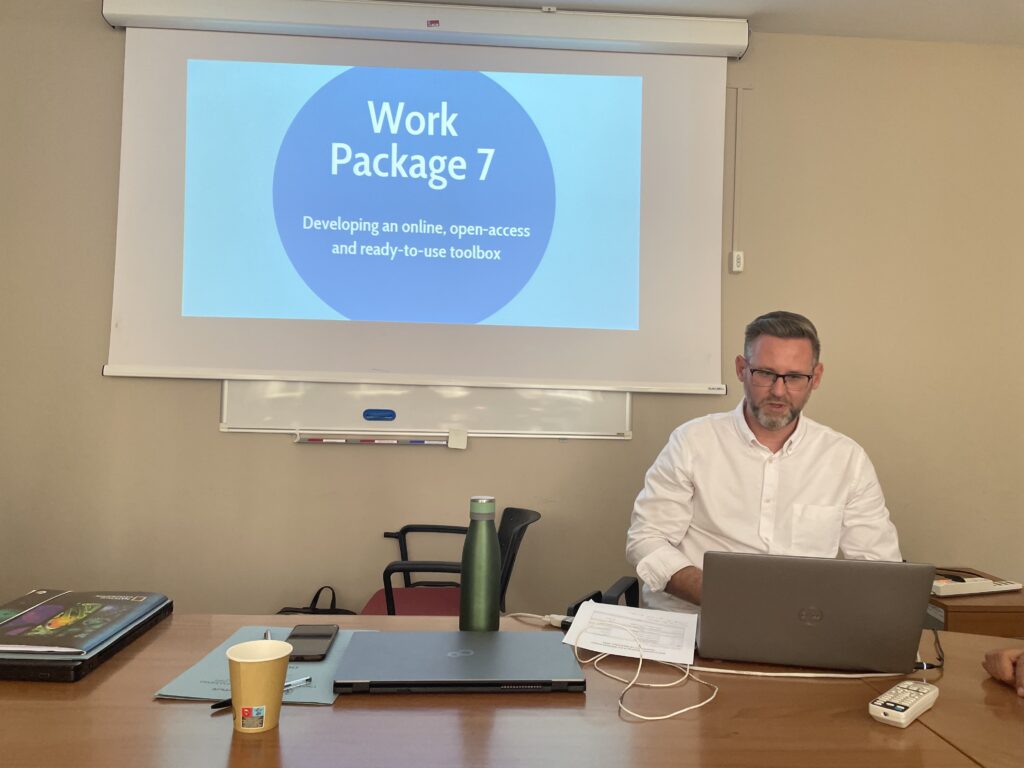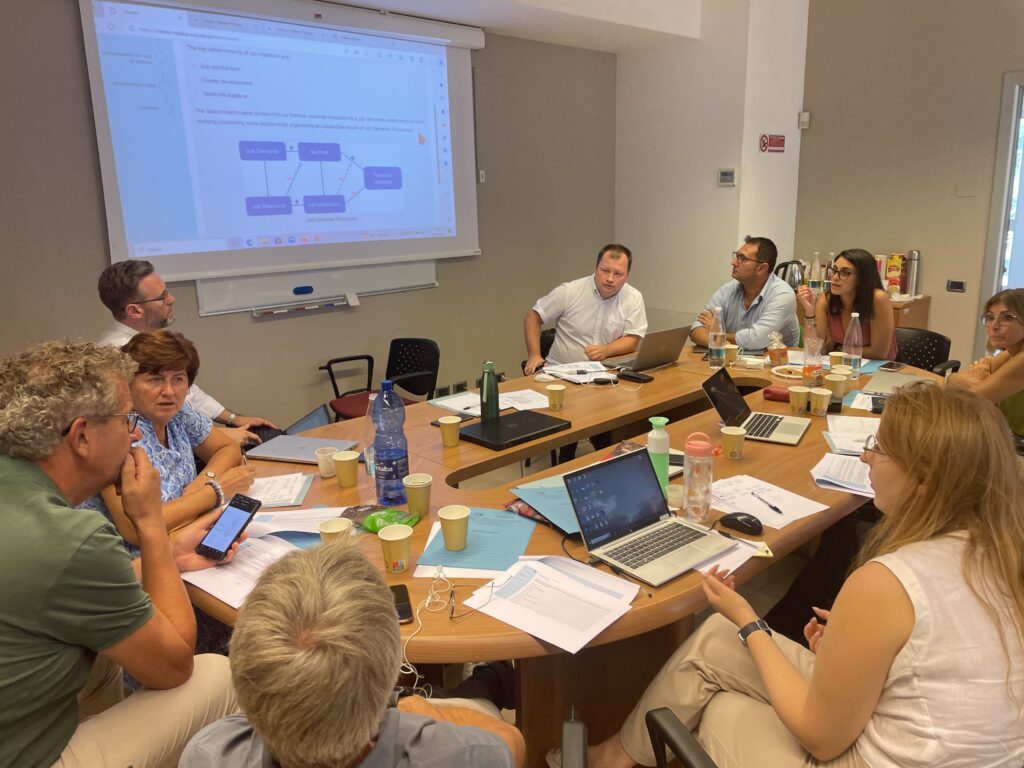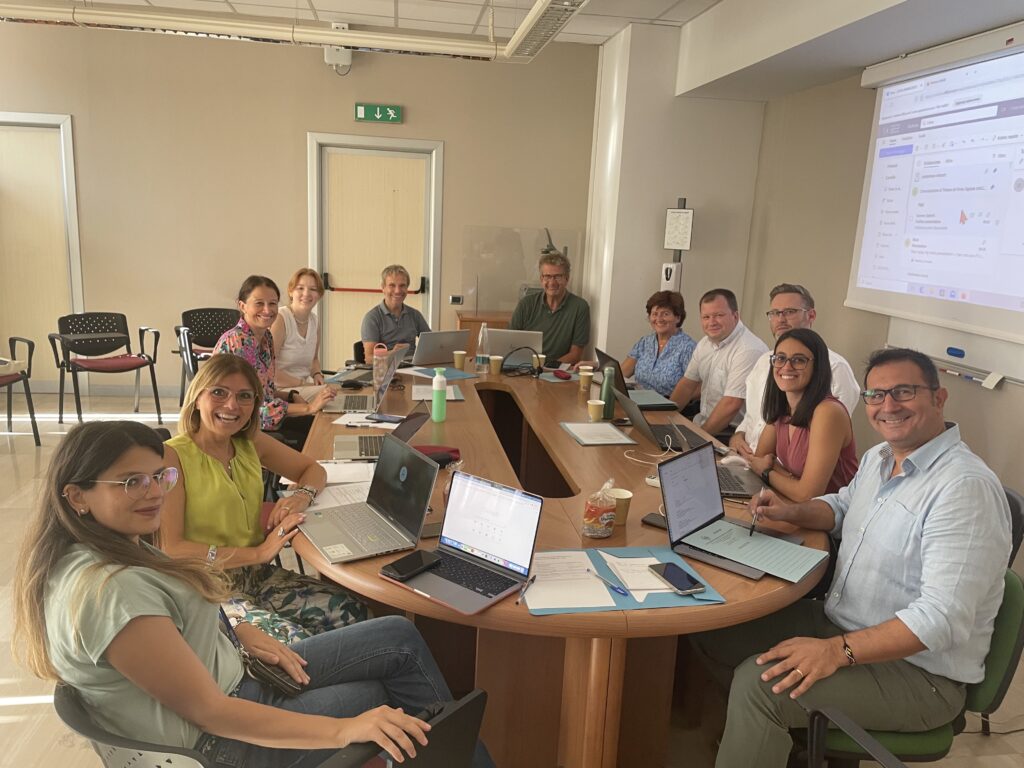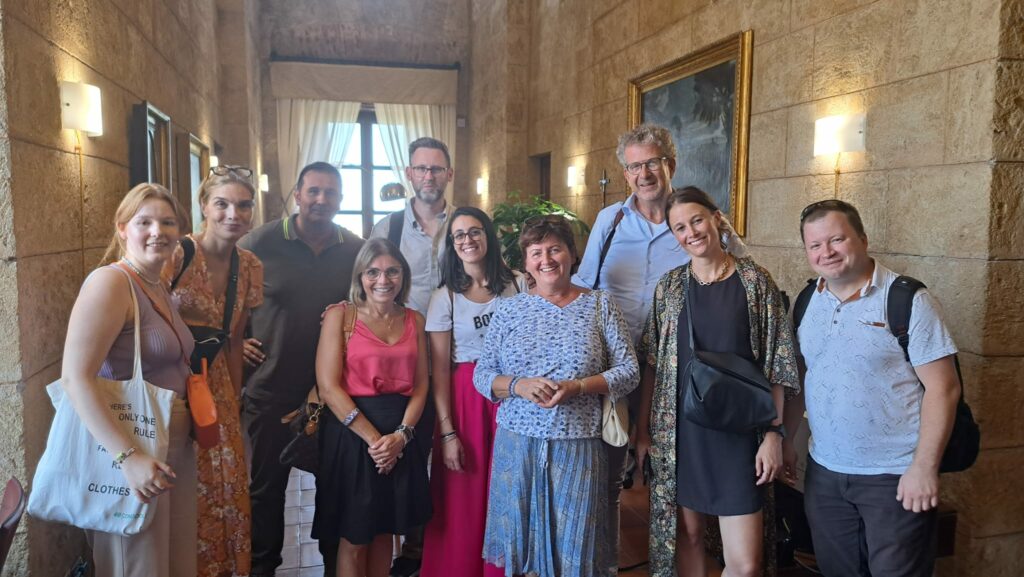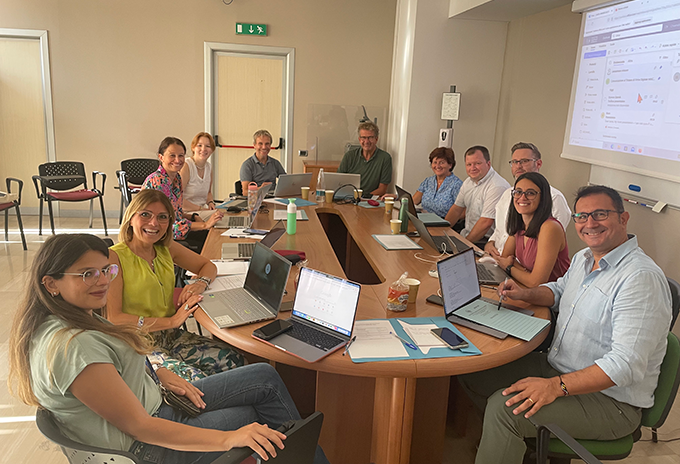Representatives of the METEOR consortium’s five member institutions met on 11-12 September in Palermo, Italy to plan out the final months of the project and ensure the broad dissemination of research findings to all interested parties.
Project coordinator Lode Godderis provided a comprehensive overview of METEOR’s progress spanning the past 2.5 years. Lode, from KU Leuven, highlighted the critical areas of focus for the remaining six months and expressed his deep appreciation to all members for their dedication, collaboration, and the trust fostered within the team. He then handed the floor to Laura Maniscalco from UNIPA, who presented a paper she’s currently writing with Neeltje de Vries from Spaarne Gasthuis. Their work delves into the impact of the COVID-19 pandemic on healthcare workers’ job retention. The preliminary findings reveal a significant increase in the number of doctors and nurses considering leaving their hospital roles. It also shows that the factors influencing their decisions have evolved.
Next, Olga Markiewicz from Aldgate addressed the communication of METEOR’s research findings. She showcased recent updates to the METEOR website, which has been revamped to focus more on project results. In the second part of her presentation, Olga talked about press releases, newsletters, the final booklet, other communications tools, and the social media strategy that will be used in the final months of the project to ensure that METEOR’s findings are accessible not only to researchers but also to healthcare managers and policymakers.
The second part of the meeting centred around the development of an online toolbox to summarise METEOR’s research findings and make them easily accessible to stakeholders. Szymon Szemik presented the core concepts and logic behind the toolbox, while his SUM colleague Kamil Barański provided a step-by-step demonstration of the toolbox’s functionalities, highlighting potential challenges. During the discussion, consortium members managed to simplify the design of this interactive tool, enhanced the user experience, and reached a consensus on its content.
Next, the team moved into a reflective session on the project. Participants focused on identifying areas where improvements could have been made, particularly regarding workload, communication, and planning. The meeting concluded with a discussion on possibilities for future collaborations.
